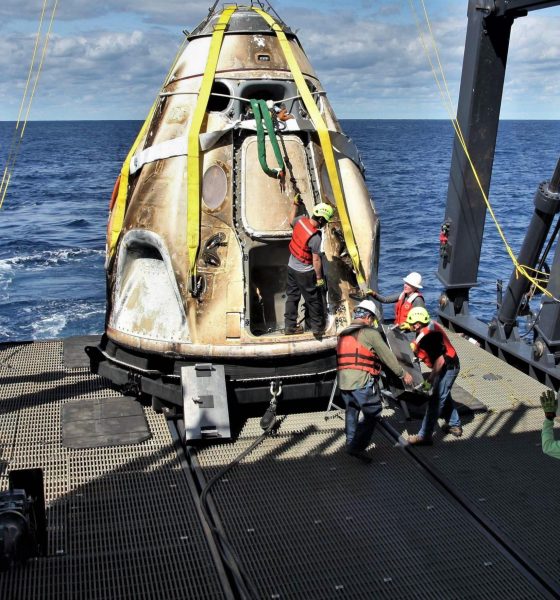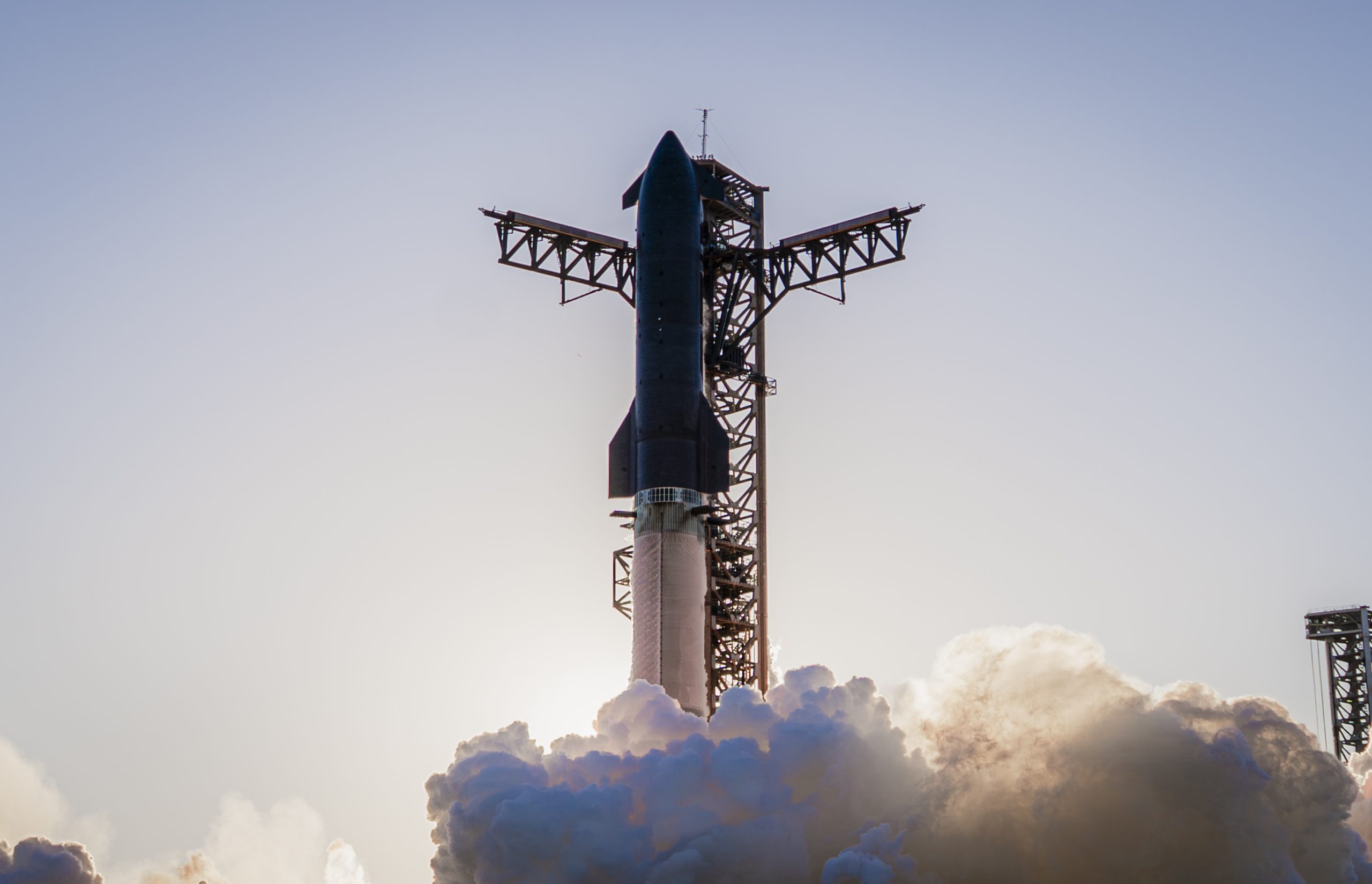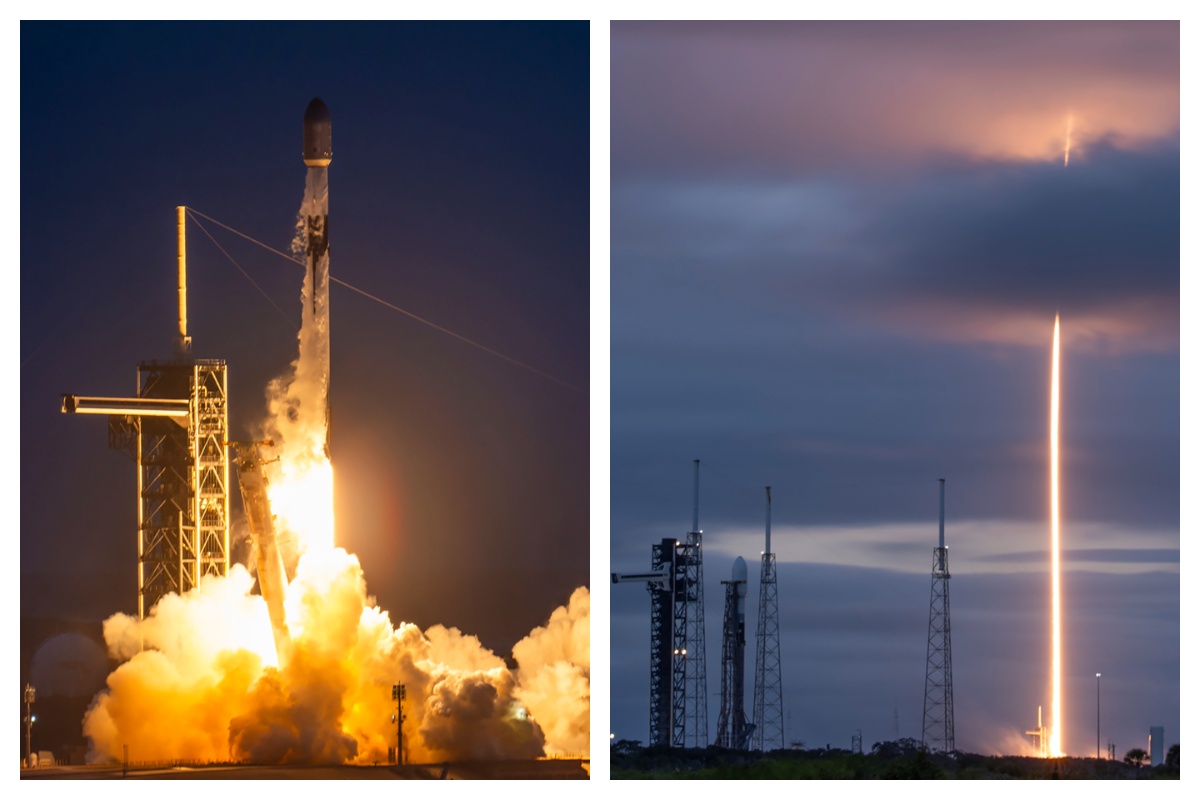

SpaceX
SpaceX’s Crew Dragon to launch astronauts in July, says Russian source
A source familiar with Russia’s aerospace industry recently informed state newspaper RIA Novosti that NASA has provided Russian space agency Roscosmos with an updated planning schedule for International Space Station (ISS) operations, including a preliminary target for SpaceX’s first Crew Dragon launch with astronauts aboard.
According to RIA’s source, NASA informed Roscosmos that the agency was tentatively planning for the launch of SpaceX’s Demonstration Mission 2 (DM-2) as early as July 25th, with the spacecraft departing the ISS, reentering the atmosphere, and safely returning astronauts Bob Behnken and Doug Hurley to Earth on August 5th. In a bizarre turn of events, Russian news agency TASS published a separate article barely 12 hours later, in which – once again – an anonymous space agency source told the outlet that “the [DM-2] launch of Crew Dragon is likely to be postponed to November”. For the time being, the reality likely stands somewhere in the middle.
While it’s hard not to jump to conclusions about the oddity of two wholly contradictory reports arising from similar sources in similar articles just half a day apart, it’s just as likely that the near-simultaneous publishing of both TASS and RIA stories is mainly a coincidence. At the same time, truth can be found in both comments made by the anonymous source(s), while they also offer a sort of best-case and worst-case scenario for the first crewed launch of SpaceX’s Crew Dragon spacecraft.
RIA began the series on March 22nd with a brief news blurb featuring one substantive quote from the aforementioned space industry source.
“The American side informed the Russian side that the launch of the [first crewed launch of] Dragon-2…to the ISS…is scheduled for July 25. The docking with the station is scheduled [to occur around one day later]. The separation from the ISS and return to Earth is expected on August 5,” the agency’s source said.
Put in a slightly different way, NASA informed Roscosmos that it had begun to loosely plan for the launch of SpaceX’s DM-2 no earlier than (NET) late July, much like NASA and SpaceX publicly announced that Crew Dragon’s DM-1 launch debut was scheduled NET January 17th as of early December 2018. DM-1’s actual debut wound up occurring on March 2nd, a delay of approximately six weeks. The cause(s) behind the discrepancy between NASA’s first serious planning date and the actual launch remains unknown but it’s safe to say that things took quite a bit longer than expected even after Crew Dragon and Falcon 9 were technically “go” for launch.
Although NASA and SpaceX now have the luxury of a vast cache of flight data and the practical experience derived from conducting Crew Dragon’s first – and nearly flawless – orbital launch and ISS rendezvous, Crew Dragon’s DM-2 mission remains an entirely different animal. Aside from requiring a number of significant hardware changes and introducing the visceral pressure of real human lives hanging in the balance, DM-2 will be a major first for the NASA after having spent the better part of eight years unable to launch its own astronauts into orbit.
A ‘race’ no more
Meanwhile, Boeing’s Starliner spacecraft – a companion to Crew Dragon under NASA’s Commercial Crew Program – has suffered multiple setbacks in 2019, reportedly pushing the vehicle’s uncrewed launch debut from April to NET August, a delay of at least four months. As a result, nothing short of severe anomalies during Crew Dragon hardware preparation and/or NASA’s reviews of DM-1 performance and DM-2 flight-readiness could prevent SpaceX from becoming the first commercial entity to build, launch, and operate a crewed spacecraft in the history of spaceflight.


According to a December 2018 update provided during NASA’s quarterly Advisory Council meetings, the entirety of Crew Dragon DM-2’s manufacturing and integration may already be complete, with the capsule potentially heading to SpaceX’s Florida payload processing facilities later this week. NAC’s December 2018 dates did not, however, account for the DM-1 launch delays that shortly followed, plausibly impacting the completion of DM-2 integration and pad delivery to ensure that any potential anomalies experienced during Crew Dragon’s test flight could be resolved in Hawthorne, CA.
According to NASA and SpaceX, DM-2’s Crew Dragon will need to be retrofitted with thermal regulation hardware to prevent Draco thruster plumbing from freezing under a handful of specific conditions on orbit, as well as potential modifications to the craft’s parachute system and the installation of four windows instead of two. SpaceX will also need to install Crew Dragon’s first orbit-ready display and control hardware. Finally, SpaceX has opted to conduct an in-flight abort (IFA) test of Crew Dragon to verify that the spacecraft can safely carry astronauts to safety from the moment of launch to orbital insertion, a test that will have to be completed successfully and reviewed by NASA before the agency allows SpaceX to proceed with DM-2.

All of the above tasks – including major agency-wide reviews of Crew Dragon’s performance during its DM-1 debut – must be completed before SpaceX will be permitted to launch astronauts to the ISS, all of which inherently add some level of uncertainty to DM-2’s practical launch schedule. If all reviews and modifications proceed flawlessly, including a perfect in-flight abort test as early as late June, it’s possible that SpaceX and NASA could be prepared to launch Crew Dragon once more by the end of July.
In reality, it’s extremely unlikely that everything will proceed perfectly, as evidenced by the drawn-out process required for NASA and SpaceX to eventually reach flight-readiness prior to DM-1. If a significant number of challenges arise over the next few months of reviews and work, it’s not out of the question for DM-2’s launch to slip to Q4 2019 or Q1 2020. Splitting the difference, it would be safest to bet that Crew Dragon will lift off with astronauts aboard no earlier than August or September. Regardless, a great many exciting milestones are soon to come for SpaceX’s first human spaceflight program. Stay tuned as SpaceX prepares to ship the second flightworthy Crew Dragon to Florida.
Check out Teslarati’s Marketplace! We offer Tesla accessories, including for the Tesla Cybertruck and Tesla Model 3.

Investor's Corner
SpaceX IPO is coming, CEO Elon Musk confirms
However, it appears Musk is ready for SpaceX to go public, as Ars Technica Senior Space Editor Eric Berger wrote an op-ed that indicated he thought SpaceX would go public soon. Musk replied, basically confirming it.

Elon Musk confirmed through a post on X that a SpaceX initial public offering (IPO) is on the way after hinting at it several times earlier this year.
It also comes one day after Bloomberg reported that SpaceX was aiming for a valuation of $1.5 trillion, adding that it wanted to raise $30 billion.
Musk has been transparent for most of the year that he wanted to try to figure out a way to get Tesla shareholders to invest in SpaceX, giving them access to the stock.
He has also recognized the issues of having a public stock, like litigation exposure, quarterly reporting pressures, and other inconveniences.
However, it appears Musk is ready for SpaceX to go public, as Ars Technica Senior Space Editor Eric Berger wrote an op-ed that indicated he thought SpaceX would go public soon.
Musk replied, basically confirming it:
As usual, Eric is accurate
— Elon Musk (@elonmusk) December 10, 2025
Berger believes the IPO would help support the need for $30 billion or more in capital needed to fund AI integration projects, such as space-based data centers and lunar satellite factories. Musk confirmed recently that SpaceX “will be doing” data centers in orbit.
AI appears to be a “key part” of SpaceX getting to Musk, Berger also wrote. When writing about whether or not Optimus is a viable project and product for the company, he says that none of that matters. Musk thinks it is, and that’s all that matters.
It seems like Musk has certainly mulled something this big for a very long time, and the idea of taking SpaceX public is not just likely; it is necessary for the company to get to Mars.
The details of when SpaceX will finally hit that public status are not known. Many of the reports that came out over the past few days indicate it would happen in 2026, so sooner rather than later.
But there are a lot of things on Musk’s plate early next year, especially with Cybercab production, the potential launch of Unsupervised Full Self-Driving, and the Roadster unveiling, all planned for Q1.
News
SpaceX reportedly mulling IPO, eyeing largest of all time: report
“I do want to try to figure out some way for Tesla shareholders to participate in SpaceX. I’ve been giving a lot of thought to how to give people access to SpaceX stock,” Musk said.

SpaceX is reportedly mulling an initial public offering, eyeing what would be the largest valuation at the time of availability of all time, a new report from Bloomberg said on Tuesday.
It is one of many reports involving one of Elon Musk’s companies and a massive market move, as this is not the first time we have seen reports of an IPO by SpaceX. Musk himself has also dispelled other reports in the past of a similar nature, including an xAI funding round.
SpaceX and Musk have yet to comment on the report. In the past, untrue reports were promptly replied to by the CEO; this has not yet gained any response, which is a good sign in terms of credibility.
However, he said just a few days ago that stories of this nature are inaccurate:
“There has been a lot of press claiming SpaceX is raising money at $800B, which is not accurate. SpaceX has been cash flow positive for many years and does periodic stock buybacks twice a year to provide liquidity for employees and investors. Valuation increments are a function of progress with Starship and Starlink and securing global direct-to-cell spectrum that greatly increases our addressable market. And one other thing that is arguably most significant by far.”
There has been a lot of press claiming @SpaceX is raising money at $800B, which is not accurate.
SpaceX has been cash flow positive for many years and does periodic stock buybacks twice a year to provide liquidity for employees and investors.
Valuation increments are a…
— Elon Musk (@elonmusk) December 6, 2025
Musk has discussed a potential IPO for SpaceX in recent months, as the November 6 shareholder meeting, as he commented on the “downsides” of having a public company, like litigation exposure, quarterly reporting pressures, and other inconveniences.
Nevertheless, Musk has also said he wants there to be a way for Tesla shareholders to get in on the action. At the meeting in early November, he said:
“I do want to try to figure out some way for Tesla shareholders to participate in SpaceX. I’ve been giving a lot of thought to how to give people access to SpaceX stock.”
Additionally, he added:
“Maybe at some point., SpaceX should become a public company despite all the downsides of being public.”
Musk has been historically reluctant to take SpaceX public, at times stating it could become a barrier to colonizing Mars. That does not mean it will not happen.
Bloomberg’s report cites multiple unidentified sources who are familiar with the matter. They indicate to the publication that SpaceX wants to go public in mid-to-late 2026, and it wants to raise $30 billion at a valuation of around $1.5 trillion.
This is not the first time SpaceX has discussed an IPO; we reported on it nine years ago. We hope it is true, as the community has spoken for a long time about having access to SpaceX stock. Legendary investor Ron Baron is one of the lucky few to be a SpaceX investor, and said it, along with Tesla, is a “lifetime investment.”
Tesla bull Ron Baron reveals $100M SpaceX investment, sees 3-5x return on TSLA
The primary driver of SpaceX’s value is Starlink, the company’s satellite internet service. Starlink contributes 60-70 percent of SpaceX’s revenue, meaning it is the primary value engine. Launch services, like Falcon 9 contracts, and the development of Starship, also play supporting roles.
News
SpaceX reaches incredible milestone with Starlink program

SpaceX reached an incredible milestone with its Starlink program with a launch last night, as the 3,000th satellite of the year was launched into low Earth orbit.
On Monday, SpaceX also achieved its 32nd flight with a single Falcon 9 rocket from NASA’s Kennedy Space Center.
The mission was Starlink 6-92, and it utilized the Falcon 9 B1067 for the 32nd time this year, the most-used Falcon booster. The flight delivered SpaceX’s 3000th Starlink satellite of the year, a massive achievement.
There were 29 Starlink satellites launched and deployed into LEO during this particular mission:
Falcon 9 launches 29 @Starlink satellites from Florida pic.twitter.com/utKrXjHzPN
— SpaceX (@SpaceX) December 9, 2025
SpaceX has a current goal of certifying its Falcon boosters for 40 missions apiece, according to Spaceflight Now.
The flight was the 350th orbital launch from the nearby SLC-40, and the 3,000 satellites that have been successfully launched this year continue to contribute to the company’s goal of having 12,000 satellites contributing to global internet coverage.
There are over five million users of Starlink, the latest data shows.
Following the launch and stage separation, the Falcon 9 booster completed its mission with a perfect landing on the ‘Just Read the Instructions’ droneship.
The mission was the 575th overall Falcon 9 launch, highlighting SpaceX’s operational tempo, which continues to be accelerated. The company averages two missions per week, and underscores CEO Elon Musk’s vision of a multi-planetary future, where reliable connectivity is crucial for remote work, education, and emergency response.
As Starlink expands and works toward that elusive and crucial 12,000 satellite goal, missions like 6-92 pave the way for innovations in telecommunications and enable more internet access to people across the globe.
With regulatory approvals in over 100 countries and millions of current subscribers, SpaceX continues to democratize space, proving that reusability is not just feasible, but it’s also revolutionary.








